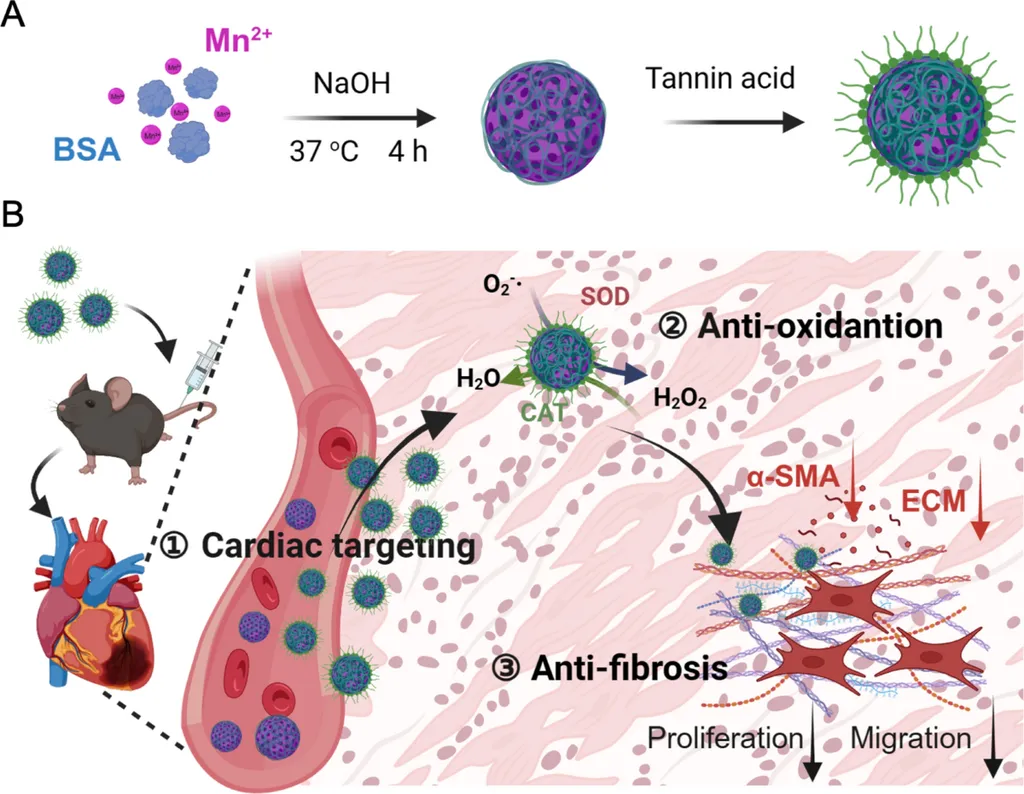In the realm of cardiac care, a groundbreaking study led by Aoyang Pu from the Department of Biomedical Sciences at City University of Hong Kong has unveiled a promising nanotherapeutic approach to combat myocardial ischemia-reperfusion (IR) injury. Published in the journal *Bioactive Materials* (translated from Chinese as “具有生物活性的材料”), this research introduces single-atom Pt-doped ceria nanozymes (Pt@CeNZ) as a novel solution to a longstanding medical challenge.
The primary treatment for myocardial infarction (MI) involves restoring blood flow to the obstructed coronary artery. However, this process can paradoxically generate reactive oxygen species (ROS), leading to secondary IR injury. Traditional antioxidants have shown limited efficacy in managing this issue. Enter Pt@CeNZ, a multifunctional nanomaterial that offers a robust, cost-effective, and customizable alternative.
Pt@CeNZ exhibits multi-enzyme mimetic functions facilitated by atomically dispersed platinum. These nanozymes effectively eliminate excess ROS in cardiomyocytes, enhancing cell viability. “The nanozymes demonstrate significantly higher uptake in cardiomyocytes, making them a targeted nanotherapeutic for cardiac tissues,” explains Pu. This targeted approach is crucial for minimizing off-target effects and maximizing therapeutic benefits.
In vivo studies confirmed that Pt@CeNZ treatment substantially reduced infarct size and improved cardiac function following IR injury. Importantly, the treatment did not induce long-term toxicity or inflammation, addressing a critical concern in nanotherapeutic development.
The implications of this research extend beyond immediate cardiac care. The energy sector, particularly in the development of advanced materials for energy storage and conversion, could benefit from the robust catalytic stability and customizable properties of Pt@CeNZ. The potential for scalable production and targeted delivery of these nanozymes opens new avenues for innovation in both medical and industrial applications.
As the field of nanomedicine continues to evolve, the work of Pu and his team represents a significant step forward. The study not only provides a novel therapeutic approach for cardiac injuries but also sets the stage for future developments in targeted nanotherapeutics. The journey from lab to clinic is fraught with challenges, but the promise of Pt@CeNZ offers a beacon of hope for patients and researchers alike.
In the words of Pu, “This research positions Pt@CeNZ as a highly promising heart-targeting nanotherapeutic with potential applications in the acute and long-term treatment of cardiac injuries.” The road ahead is bright, and the future of cardiac care is looking increasingly nano.

